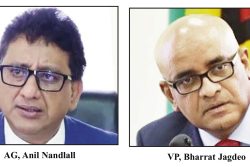Today’s Chess Column continues the Anatoly Karpov Sport Express interview, which was done at the end of 2014. The interview was lengthy and dealt with a wide number of subjects. Listening to Karpov and replaying his chess games may give one an insight into whether a world chess champion’s brain can be considered “special.” Some people who influence the planet Earth think so. For example, there are over 200 postage stamps dedicated to Karpov as an exemplary chess player.
Karpov is himself a renowned philatelist. This week, he speaks about his stamp collection and his adventures in the extravagant world of philately.
 SE: You appear on more than 200 stamps. Are there any you do not like?
SE: You appear on more than 200 stamps. Are there any you do not like?
AK: In North Korea they printed a stamp in tribute to my match with Korchnoi. On it both Viktor Lvovich [Korchnoi] and I look like Koreans. The African stamps on silver foil are also something special. The Brazilian grandmaster Henrique Mecking appears…like a black African, while I look like a mulatto.
SE: What is the crown jewel in your stamp collection?
AK: A Cuban stamp series in 1951 commemorating the 30th anniversary of Capablanca’s victory over Lasker. There were two versions, one that was perforated, and the other not. The latter were kept in the safe of the company which had printed the stamps. In 1979, one of the owners died, the safe was opened and [there was] a sheet of the non-perforated stamps. They went for $600, which at that time was a considerable sum.
SE: How did they come to you?
AK: A friend, an avid stamp collector, was president of the Spanish Chess Federation for many years. Just before he died, he offered to sell me his collection. The stamps were among them…
SE: What is the most interesting way by which a stamp came to you?
AK: There is a story that made me famous in the world of philatelists. It’s about an auction in Belgium in 2000.There are people who get into a fever on such occasions, but I am completely calm. Thanks to chess, I have learned to control my feelings. If the price of an item in an auction went through the roof, then so be it; you cannot have everything. At this auction there were many people unexpectedly. The prices shot up. After a while I realized that the only item left that I really wanted to buy was a XIX century envelope. It was a standard dimensioned envelope with small border. Ok, I think I will fight for this one a bit. The number of bidders declined gradually until the only one left was a Belgian pensioner. He fought and fought and only gave up when the price had reached an astronomical €16,000. He simply did not have that much money. Yes, and I had driven up the price, but it was really not my style.
SE: Had you gone too far?
AK: In the evening, a friend, the organizer of the auction, called me at the hotel:
This is what was discovered: There was an envelope with 17 stamps, one of which was no longer in the envelope. Before it arrived in the auction, it had belonged to the well-known collection of a Belgian tobacco magnate. The first description was from 1897, when there were no photos. It was noted that a stamp was missing. It was the most expensive item in the history of Belgium mail, the equivalent of €365 today. And the 17th missing stamp found itself in the possession of the pensioner, who had fought with me to get the envelope!
SE: How had he gotten it?
AK: He collected first editions of stamps. He had received the auction catalog, read the description of the envelope and became interested. He then looked in his album, looked at the contours and the post mark and realized this was the envelope it came from. He then rushed, from France where he was living, to the auction in Belgium.
SE: The poor guy.
AK: Why? He sold me the final 17th stamp, not at its nominal value of €60, but for €3000, or 50 times its value. Still, it was worth it to me. The price of the complete envelope grew instantly, doubled. At the following auction, it was solemnly placed under the surveillance of television cameras. After more than 100 years, including two world wars, the stamp had finally rejoined its envelope intact.
SE: How much is your stamp collection worth?
AK: I have no idea. On the Internet numbers have surfaced at around €13 million, but they are based on estimates that do not know the full content of my collection. To evaluate the whole collection would be a tough job, and I’ve never tried. Why should I? I don’t collect the stamps as an investment and am not trying to sell them. I enjoy seeing the collection grow.
SE: Do you keep your collection in a safe deposit box in the bank?
AK: Yes. It is better to have one in Europe, because the collection is constantly expanding. But a part is also in Moscow.
SE: Do your wife and daughter share your interest?
AK: Sonja not particularly. Natalia has her own passion – she collects Soviet porcelain.
SE: Have you ever thought about who should get your precious treasures after you pass away?
AK: No. Thinking about it is still too early. In any case, the Chess Olympics series should not be separated. These are the finest collections in the world! Yes, at auctions a lot is sold in parts, if the heirs are not interested in the hobby, but unique collections should remain in the family.
SE: Is there a stamp that is no longer in your collection, the loss of which you bitterly regret?
AK: Not a single one! I would not have won so many tournaments and World Championship matches if I constantly lamented the missed opportunities. Think of the match in Seville with Kasparov in 1987. Ten more seconds and I would have beaten him and regained the world title. Not to mention the fact that it cost me $400,000 in financial terms. If you spend your entire life tormenting yourself, the nervous system breaks down very quickly. Of course I retain the lesson learned from it, but the fact itself, I try to forget.
Chess games
The following games were played at the 2015 European Individual Champion-ships in Jerusalem. A record 115 grandmasters are participating in the Championships. The tournament ends today.
White Ernesto Inarkiev
Black Nijat Abasov
- d4 Nf6 2. c4 e6 3. Nf3 d5 4. Nc3 Bb4 5. cxd5 exd5 6. Bg5 Nbd7 7. e3 c5 8. dxc5 Qa5 9. Rc1 Ne4 10. Qxd5 Nxc3 11. bxc3 Bxc3+ 12. Kd1 O-O 13. Bc4 Nxc5 14. Be7 Bb4 15. Bxf8 Be6 16. Qd4 Rxf8 17. Ke2 Rd8 18. Qh4 Bxc4+ 19. Qxc4 b5 20. Qc2 Na4 21. Nd4 Nc3+ 22. Kf1 Qa6 23. h4 Ba5 24. Qd3 Nxa2 25. Ra1 Nb4 26. Qa3 Nc6 27. Kg1 b4 28. Qa4 Rxd4 29. exd4 Qc4 30. d5 1-0.
White Mihail Marin
Black Yair Kraus
- Nf3 d6 2. g3 e5 3. Bg2 f5 4. O-O Nf6 5. c4 Be7 6. Nc3 O-O 7. d4 e4 8. Ng5 c6 9. d5 Na6 10. f3 exf3 11. Bxf3 Qb6+ 12. Kh1 Ng4 13. Bxg4 fxg4 14. Rxf8+ Bxf8 15. Qd3 g6 16. Be3 Bf5 17. Qxf5 gxf5 18. Bxb6 axb6 19. Rf1 Bg7 20. Rxf5 Nc5 21. Nf7 Bxc3 22. bxc3 Rxa2 23. Nxd6 cxd5 24. cxd5 Rxe2 25. Rg5+ Kf8 26. Rxg4 Nd3 27. Rh4 Re7 28. Rd4 Nc5 29. Kg2 Re2+ 30. Kh3 Ke7 31. Nc8+ Kd8 32. Nxb6 Ne4 33. d6 h5 34. Rd5 Rb2 35. Na4 Ra2 36. Nc5 1-0.
White Jan-Krzysztof Duda
Black Omer Kali
- e4 e5 2. Nf3 Nc6 3. Bb5 a6 4. Ba4 Nf6 5. O-O b5 6. Bb3 Bb7 7. d3 Be7 8. Re1 O-O 9. Nbd2 Re8 10. c3 h6 11. Nf1 Bf8 12. Ng3 Na5 13. Bc2 c5 14. Bd2 Nc6 15. d4 cxd4 16. cxd4 d6 17. d5 Nb8 18. a4 Nbd7 19. axb5 axb5 20. Bd3 Ba6 21. b4 Qb8 22. Qe2 Qb7 23. Ra5 Reb8 24. Rea1 Ne8 25. Nh4 Ndf6 26. Nhf5 Nc7 27. Qf3 Nfe8 28. Nh5 Qc8 29. Nhxg7 Nxg7 30. Nxh6+ Kh7 31. Qxf7 Qd8 32. Qg8+ Kg6 33. Nf7 Qe8 34. h4 Qxf7 35. h5+ Kf6 36. Bg5+ Kxg5 37. Qxf7 1-0.








